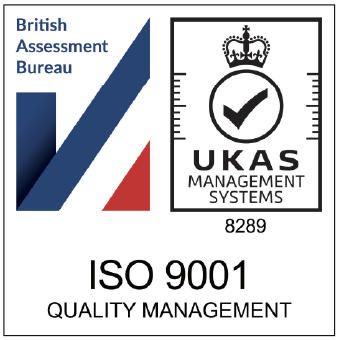Just how important is stock control to the success of your business? Well, very!
If you can properly manage and take control of your inventory, you can guarantee that your business will run more efficiently and is more profitable than one that doesn’t.
Why is this? Overstocking, understocking and stock shrinkage can all be costly, both in terms of time and money. If you don’t have a clear idea of how much stock you currently have, how much you need and where that stock is going, how can you plan for what lies ahead?
In this guide, we take a look at a few reasons why stock control is so important and look at some of the best ways to approach it.
What is Stock Control and Inventory Management?
Basically, stock control is the process of keeping track of how much product you have, and where your inventory has gone. If you keep on top of your stock control procedures properly, you should have a clear view of how much product you have in your warehouse and how much of your inventory has left through sales.
What is the Purpose of Inventory Control & Stock Control Systems?
In a perfect world, the amount of stock you have in your warehouse and the amount you have sold would add up to the total amount you have ordered from your supplier or manufactured yourself.
As most businesses owners will already know though, this is rarely the case! Stock shrinkage is a very real problem, whether it is caused by theft, damage, waste or simple human error.
The purpose of inventory control is to minimise these risks as much as possible. By setting up a thorough inventory control procedure or system, you can immediately see where stock has been lost.
Which leads us onto the next reason why inventory control is so important…
Imagine you send out an email promoting a particular product you want to boost sales of. The promotion works great, and orders come flooding it. Your warehouse jumps into action and starts packing these orders up, but there is a problem – you seem to be missing a whole box of products that you thought was patiently waiting on your shelf.
What has happened? Was your last order from your supplier short? Did you check? Or, have sales been coming in so fast that you didn’t realise you already needed to order more?
This is why inventory control is so important. Keeping good control of your inventory stock allows you to always ensure you have the products there to meet demand. At the end of the day, the purpose of this is to help you make more money.
On the other side of the coin, inventory control also ensures that you don’t over-order on products that will end up sitting in your warehouse without getting sold. This not only takes up space that you could be using for faster selling products, but can also end up outdated if you change your packaging or if the items go out of season.
Inventory control is needed to make sure you always have the right amount of stock at the right time.
What Stock Control Procedures Should You Be Following?
So, we can see now why stock control is so important. Your next step is to set up a proper stock control procedure that best ensures you can manage your inventory thoroughly.
Here are the main inventory tips you should cover when laying out your stock control procedures…
Set ‘par levels’ or minimum levels of stock
This is similar to demand forecasting – we recommend you read our excellent guide to demand forecasting to get to grips with this further.
To keep good control of your stock, you firstly need to know how much stock you will actually need – and how much you will be able to sell.
Based on this, you can set up a ‘par level’ for each product. This means the minimum level of stock you need to have in your warehouse at any one time to be able to fulfil your orders.
If your inventory falls below this level, you need to order more, or you run the risk of failing to keep up with sales. If you have good inventory control software, it should alert you when your stock is at this level so you know it’s time to review and restock.
On the other hand, it’s important not to exceed this level too much either – if you do, you will be wasting warehousing space, reducing the efficiency of your business.
The key to demand forecasting is keeping on top of seasonal trends and your marketing calendar. Your par levels might change over the year, so you need to be reviewing this regularly.
Run an efficient storage and order system
If your warehouse is a mess, the chances are that your inventory control will be a mess, too.
The best way to manage and control your inventory is to keep on top of it throughout every daily task and throughout your supply chain.
This means…
- Checking the stock you receive from suppliers or your manufacturer is all there – accounting for missing items as early as possible is essential
- Quality control to identify issues with products as soon as you can
- Properly labelling your stock with individual item codes or – SKUs – so you can keep track of them
- Rotating your stock regularly so products don’t expire or age while in storage – this doesn’t just apply to perishable items, either
- Having clear order forms that reduce the risk of mistakes occurring when picking and packing
- Managing returns accurately so exchanged and returned items don’t get lost in the system
This is a lot to manage, so having a system that is easy to update and that gives you wide visibility over your inventory is essential to giving you full control, allowing you spot errors before they become bigger problems.
Keep up with stock checks
Stock checks are perhaps one of the oldest forms of stock control but are still essential. Stock checks, or stocktaking, is the process of physically counting how many of each product you have in your inventory to see if this matches up with your records.
There are different types of stock taking you can utilise, including
- Periodic stock checks – you decide how regularly you need to count your stock – every month or every quarter, for example – then you check it in its entirety
- Continuous or cyclical stock taking – rather than doing a full stock check in one go, you spread them out regularly over the year, one product line at a time
- Spot checking – in between larger stock checks, you choose a product to check up on to ensure it is selling to plan
- Annual stock take – the most traditional type stock check, you count everything in your warehouse at the end of the financial year
Different types of stock checking work for different types of business – whichever one you choose to do, make sure it gives you an accurate view of your inventory.
Work with inventory management software
The best way to manage and keep control of your inventory is to use an inventory management software.
Not only does this reduce the risks of human error, but is highly efficient, updating instantly for you to see where your stock is. In addition, you will get real time reports and analytical data, providing you with insights into your inventory that you just wouldn’t have if you were relying on paperwork or spreadsheets alone.
Take a look at our guide to the essentials of inventory management software to find out more.
How Can You Improve on Your Inventory Control?
Inventory control and management isn’t a small task – it needs daily attention and continuous maintenance to ensure you aren’t wasting time and losing money.
This can often be a new hurdle for growing or expanding businesses. As orders step up and you enter more uncertain territory, controlling your inventory is one of the most vital keys to your success.
This is where the benefits of using a third party logistics provider can come in helpful. Offering experience in running the most efficient warehouses with stock control processes already in place, you can avoid those stumbling blocks that can be costly in the long run.
PS, want to know more about how you can take better control of your inventory? Contact 3PL today for a chat about how proper stock management can help your business to grow faster.
More from the 3PL blog…
What is a Third Party Logistics Provider? | How Do I Choose the Right Order Fulfilment Partner? | A Complete Guide to Warehouse Abbreviations and Jargon
Speak to 3PL about your eCommerce order fulfiment
It’s time to supercharge your ecommerce brand business and overtake your competitors. Speak to 3PL today and find out how we can take your ecommerce fulfilment to the next level.


